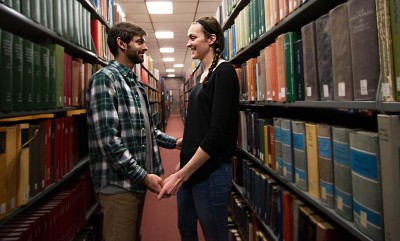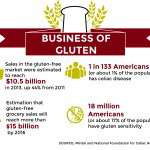
Valentine’s Day brings feelings of love, passion and sometimes resentment. It stands to reason that not every couple will end up happy ever after, but can science detect the signs before we get in too deep? Some studies dig into machinations of relationships and get to the bottom of what many of us overlook every day.
Every year, approximately 2 million Americans tie the knot, according to data from the National Vital Statistics System at the U.S. Centers for Disease Control and Prevention. Some social scientists say a number of those marriages will be unsuccessful. In psychologist Ty Tashiro’s 2014 book “The Science of Happily Ever After,” he points out only 3 of 10 marriages remain happy and healthy as a couple.
“The divorce rate has not been increasing for a long time,” said Lori Cluff Schade, a Utah-based licensed marriage and family therapist. “It has actually gone down a little because people are getting married later or not at all.”
It’s still not good news for marriage. In 2012, the Journal of Marriage and Family concluded that marriage, compared to long-term relationships of couples who live together, shows small benefits. According to the study, there is a chance everyone has been looking at relationship success through a small lens. Health gains were correlated with marriage, but, it argued, that may be due to Medicare as opposed to the relationship itself.
“There is a huge expectation placed on relationships these days, especially with the media that we have at our disposal. We see a lot more of other people’s relationships,” said Madeline McGill, a College of Arts and Sciences sophomore. “The way you’re broadcasting adds a certain amount of, ‘Oh I need this.’ It doesn’t necessarily mean that couples aren’t happy. I just think if we see someone else’s relationship, you can’t help but compare your relationship to theirs.”
A lot of research on the subject comes from John Gottman, who in 1986 founded his “Love Lab” at the University of Washington. From his years of research, he has discovered the physiological difference between “masters” and “disasters” of relationships.
“What he [Gottman] found is that couples who make it have five positive remarks for every negative remark in a conflict situation,” said Leslie Brody, professor of psychology at Boston University. “He brings couples into the lab and asks them to talk about an issue they disagreed on. The couples who ultimately don’t get divorced are making 20 positive remarks for every negative in calmer moments.”
Gottman discovered couples destined for failure would shift into a fight or flight mode. When they were in the lab being asked about their relationships, their bodies were rapidly responding. Each person was ready to be attacked by their significant other. The couples who were destined to last were reporting calmer physical signals.
McGill’s boyfriend, Boston College senior Collin Fedor, shared his view on fighting in relationships.
“Disagreement is good, but not to the point where you start yelling and it gets personal,” he said. “Fighting has the potential to cause a lot of bad energy and negative feelings. Going through those ups and downs can become a strain. When I’m with her, I usually feel a positive energy when I’m with her.”
In times of conflict, Brody said successful couples know how to take each other’s temperatures. If a situation is escalating, she said, they need to first recognize it, then figure out how to bring it back down to earth.
“Engaging in criticism and contempt can be so overwhelming that the partner can get what is called shell shock, so that they have physiological changes like increased heart rate, adrenaline, blood pressure and their autonomic nervous system sort of kicks in and kicks up,” she said. “The physiological changes make it impossible to continue discussion.”
Schade and Brody both said the ability to take the temperature in a fight has a huge impact on the nature of a relationship.
“People can learn to stop self-destructive relationship behaviors, and if a couple has been together for a while, I always assume they had some foundation of compatibility,” Schade said. “The most important compatibility is being human. Most of us tolerate differences when we can safely reach our partners.”














